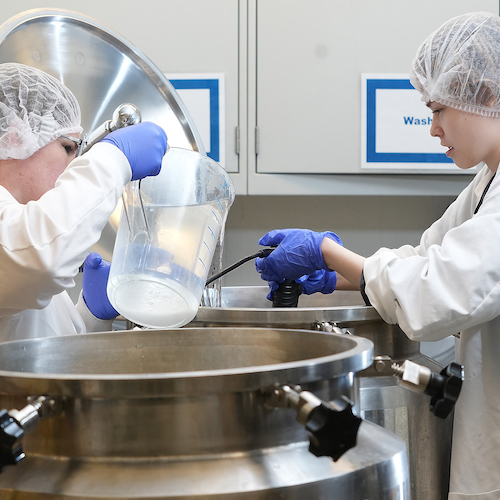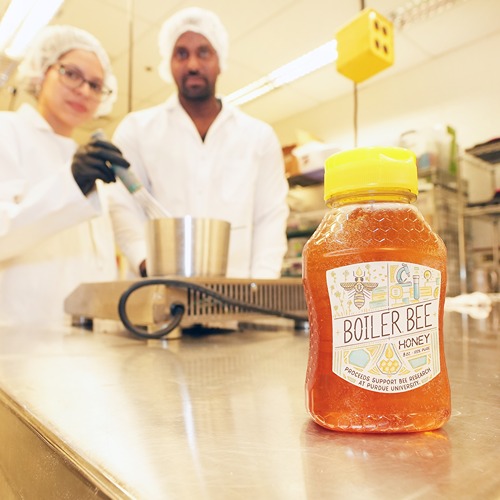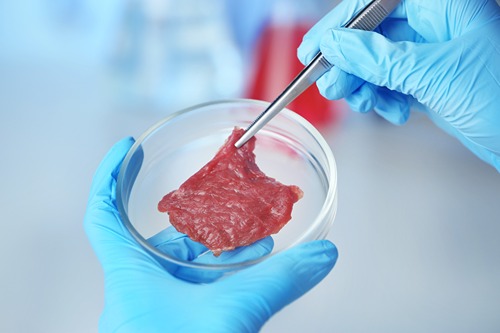About the feature
Many people are involved in the remarkable range of programs, services and facilities that undergird research in the College of Agriculture. Collectively they’re integral to the college fulfilling its research mission. “Behind the Research” explores their individual roles. Each academic year, we profile six people whose work supports the College of Agriculture’s global reputation for developing innovative, multidisciplinary solutions to challenges and then putting those solutions into action.
Mike Woodard, greenhouse manager, Department of Botany and Plant Pathology
Among essential personnel who were on campus full time during the pandemic, helping to ensure that no plant materials in Purdue’s collections were lost.
- Recommended and installed improvements to the Lilly greenhouses, such as replacing high-pressure sodium lights with cooler, more energy efficient and longer-lasting LEDs.
- Implemented controls on purchases of soil purchasing to ensure fair chargebacks: “Rarely do we lose a bag of soil.”
If Mike Woodard walks into a greenhouse space and finds a researcher mixing fertilizer one batch at a time in a watering can, he will likely mention the availability of a fertilizer injector. Or if he sees someone watering by hand, he’ll offer information about an automated irrigation system.
“That way, they can do their research instead of spending time on the manual tasks,” he explains.
As greenhouse manager, Woodard offers as much practical help as he can to more than 40 faculty members from agricultural and biological engineering, agronomy, biology, and botany and plant pathology who conduct research in the Lilly Greenhouses and Plant Growth Facility. Add in their postdocs, graduate students and undergraduates, more than 200 people consistently work in the space. Woodard interacts with many of them.
Woodard hails from tiny Ona, West Virginia. He earned a BS degree in agriculture at Berea College in 1989 and an MS in horticultural science at West Virginia University in 1992. “I wanted to work in a greenhouse,” he says. “I grew up on a farm and liked growing things, but I didn’t like the cold weather.”
Over the next 25-plus years, Woodard managed research stations for a major international flower seed breeding and production company, and for one of the largest horticultural growers in the U.S.
He applied for the greenhouse manager opening at Purdue not only because it tapped his many years of experience, but also because it offered an opportunity to apply his ideas “on how I’d make the facility better so the PIs and their students can move their research programs forward.”
That’s not always easy, given that the original greenhouse that forms part of the 60,000-square-foot facility is more than 50 years old.
Except for 10 rooms that have been updated and networked, environmental control systems in the 53 greenhouse spaces date to the early to mid-‘90s. “When I’m off site, I have no idea what’s going on except for those 10 rooms,” Woodard says. He has to physically check each space, and adds wryly that things always seem to break on a weekend or while he’s on vacation. Finding repair parts can be difficult.
Still, he’s cheered that the number of rooms he can monitor off site will climb to 22 by this summer, with more planned in the future. In addition to maintaining correct temperatures and respond to alarms, he will be able to adjust lights, heating, cooling and fans remotely.
“It’s not all research-related plant material,” he notes. “We also have a teaching selection, mostly in pots on a permanent basis.”
Each room is scouted weekly as part of overall insect control for the facility. Woodard’s team tracks insect populations and sprays only the rooms that need it. He also has implemented some new biological control programs.
“I like the variety,” Woodard says of his responsibilities. In addition to interacting with faculty and students, he enjoys being a part-time mechanic. “I fixed things on the farm and do my own car repair.”
Different research projects demand different conditions, and Woodard tries to accommodate them all. “A roomful of corn isn’t as pretty as a room full of petunias,” he acknowledges. But when it comes to serving research in the college, he adds, they’re equally important.





